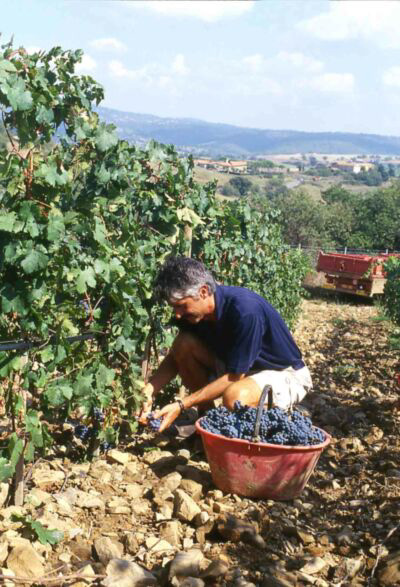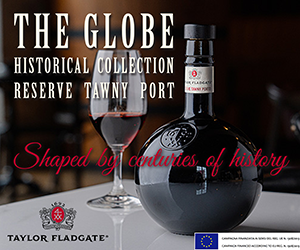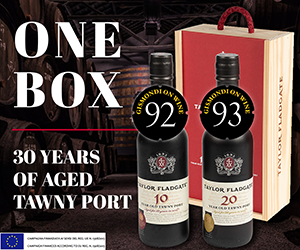The record 2004 New Zealand grape vintage was in line with expectations said New Zealand Winegrowers today as it released the results of the 2004 Vintage Survey.

Winery expectations about wine quality from the vintage are high given the favourable growing and ripening season in most regions.
New Zealand Winegrowers estimates grape growers and winemakers harvested 166,000 tonnes of grapes in 2004, an increase of 89,100 tonnes or 117% on the severely frost-reduced 2003 vintage.
The harvest of 166,000 tonnes is a record for the industry, surpassing the previous high of 118,700 tonnes set in vintage 2002. The record harvest is primarily the result of the rapid rise in the producing vineyard area which surpassed 18,000 hectares for the first time this year.
Commenting on the harvest, New Zealand Winegrowers Chief Executive Philip Gregan said, "We have been expecting this record harvest. In February this year we announced we anticipated a harvest of between 150,000 and 170,000 tonnes, and we re-affirmed this view in mid-April. Our expectation was based simply on a record producing area and a return to normal yields this year."
Mr Gregan said the industry was generally very confident about harvest quality and the prospects for the 2004 wines.
"Overall, vintage 2004 will reflect a number of different aspects of the growing season. First, in most regions, weather conditions during flowering were favourable, leading to a return to normal yield levels, after the small crop in 2003. Then, the December/January period was warm and dry. While February was wetter than normal, it was followed by a dry March and April that provided an extended period of time for ripening, and ideal conditions for flavour and colour development."
"Together the weather during the growing and ripening season, combined with a dedicated vineyard management, which included crop thinning in many varieties, produced grapes in very good condition at harvest time" commented Mr Gregan.
Winemaker reaction to the harvest has been positive. Brent Marris from Wither Hills in Marlborough noted "...the Sauvignon Blanc was very consistent and showed typical Marlborough characters", while in Hawkes Bay Nicholas Buck of Te Mata commented the "... 2004 growing season has delivered ... a quality potential only seen in the best years". Tim Finn of Neudorf Wines in Nelson characterised the harvested fruit as "excellent", while Jeff Clarke, chief winemaker at Montana Wines said he was "...very happy with quality overall."
The combination of increased volumes and potentially high quality is expected to lead to a surge in export sales in the year ahead, as well as some recovery in domestic market share. To assist sales growth in the year ahead, New Zealand Winegrowers is planning a 60% increase in generic promotional activity to support wineries' export drive.
Regional Production
Regionally in terms of tonnes harvested, Vintage 2004 produced record crops in areas such as Marlborough, Hawkes Bay, Nelson, Wellington/Wairarapa and Canterbury/Waipara. Comparative changes in production with vintage 2003 were as follows[1]:
| 2003 | 2004 | Change | %Change | |
| Marlborough | 40,537 | 92,581 | 52,043 | 128% |
| Hawkes Bay | 10,832 | 30,429 | 19,597 | 181% |
| Gisborne | 14,350 | 25,346 | 10,995 | 77% |
| Wellington | 1,311 | 2,820 | 1,509 | 115% |
| Nelson | 3,149 | 4,563 | 1,414 | 45% |
| Canterbury | 1,422 | 2,825 | 1,403 | 99% |
| Auckland | 715 | 1,497 | 782 | 109% |
| Northland | 182 | 144 | -37 | -21% |
| Waikato | 497 | 457 | -41 | -8% |
| Otago | 1,825 | 1,439 | -386 | -21% |
Marlborough was again the largest producing region in 2004, comprising 57% of the vintage, while Hawkes Bay harvested 19% and Gisborne 16% of the grape crop. Together the three largest regions represented 92% of the harvest, compared with 88% in Vintage 2003. The largest producing of the smaller regions in 2004 was Nelson as was the case in 2003. Of the smaller regions Wellington/Wairarapa displayed the largest production increase in 2004.
Varietal Production
The increase in overall production was spread across virtually all grape varieties. Record crops have been harvested for most varieties, including key export styles such as Sauvignon Blanc, Chardonnay, Pinot Noir and Merlot.
| 2003 | 2004 | Change | %Change | |
| Sauvignon Blanc | 28,266 | 67,773 | 39,507 | 140% |
| Chardonnay | 15,534 | 35,597 | 20,063 | 129% |
| Pinot Noir | 9,402 | 20,145 | 10,743 | 114% |
| Merlot | 4,957 | 9,330 | 4,373 | 88% |
| Riesling | 3,376 | 5,647 | 2,272 | 67% |
| Semillon | 2,192 | 3,511 | 1,319 | 60% |
| Pinot Gris | 836 | 1,888 | 1,052 | 126% |
| Cabernet Sauvignon | 3,201 | 4,045 | 844 | 26% |
The dominant varieties harvested were Sauvignon Blanc which accounted for 42% of production, followed by Chardonnay with 22% and Pinot Noir with 12%. Together these varieties represented 76% of the vintage compared with 71% in 2003.
[1] The numbers in this and the following table are taken direct from the Vintage Survey; as a result in this regional table production does not sum to 166,000 tonnes - this is because the survey covers only 98% of production, not 100%. As a result the production by region and variety will be higher than indicated in these tables.

 quicksearch
quicksearch





